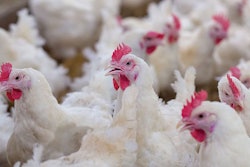
That incomes around the world are rising and demand for meat growing always sounds very positive, but life is never quite that simple.
With a more dire warning this month about climate change and fingers again being pointed at livestock production, rising demand for meat perhaps becomes less attractive, particularly as, in many developing countries -- where demand is expected to increase most -- food produced does not always reach the consumers who want it.
But there are initiatives afoot that aim to not only make it easier for perishable foods to reach the consumers who want them, but also that will achieve this in the most environmentally friendly way.
Take, for example, an initiative launched earlier this year between the Energy Institute at the UK’s University of Birmingham and India’s Shakti Sustainable Energy Foundation, which is looking at advancing the use of new sustainable technology to help meet rising demand for cooling.
India provides a particularly interesting example of how demand for meat is changing, how consumers cannot always access the food that is produced, and the issues that could arise if nothing is done to make production and transport more environmentally sustainable.
Consumption of high nutrition foods, including meat, is expected to reach half-a-billion tons by 2020 and the government has set a target of doubling farmers’ income by 2022. However, it is worth remembering that, currently, up to 50 percent of India’s food production post-harvest is lost – primarily due to a lack of cold chain.
According to Krishnan Dhawan, CEO of Shakti Sustainable Energy Foundation, cold chains are expected to proliferate rapidly over the next few years through a combination of market and policy driven efforts. This will help supply meet demand and reduce spoilage but there could be a cost.
Traditional cold chain technologies can be highly polluting and, under a conventional scenario, refrigeration vehicles and pack-houses would run on diesel, which is polluting and energy inefficient.
Increasing benefits, lowering environmental costs
This new partnership will see researchers work to develop a center of excellence that demonstrates innovative and integrated solutions to create cooling solutions for farmers without compromising climate goals. This will be followed by a blueprint for roll out of across the state of Haryana, a major producer of eggs, home to a couple of the country’s leading poultry concerns, and bordering rapidly-growing capital Delhi, already home to almost 20 million consumers.
The project seeks to advance the use of what it calls “clean cold” to sustainably meet the rising demand for cooling.
The first phase of the partnership will look at assessing the energy emissions footprint of the cold chain sector in India, analyzing energy and technology footprints in sectors including food, developing vision for the types of new cold-technology to be used, and creating innovative ways of financing and implementing clean cold by linking farmers, producers, financiers and major food retailers.
Professor Toby Peters, of the University of Birmingham, commented: “A seamless cold chain will reduce food loss to raise farmers’ incomes and give them bigger markets, whilst expanding their selling range. But, at the same time, it must be clean and sustainable cooling – we must not replace a social crisis with an environmental catastrophe.”


















